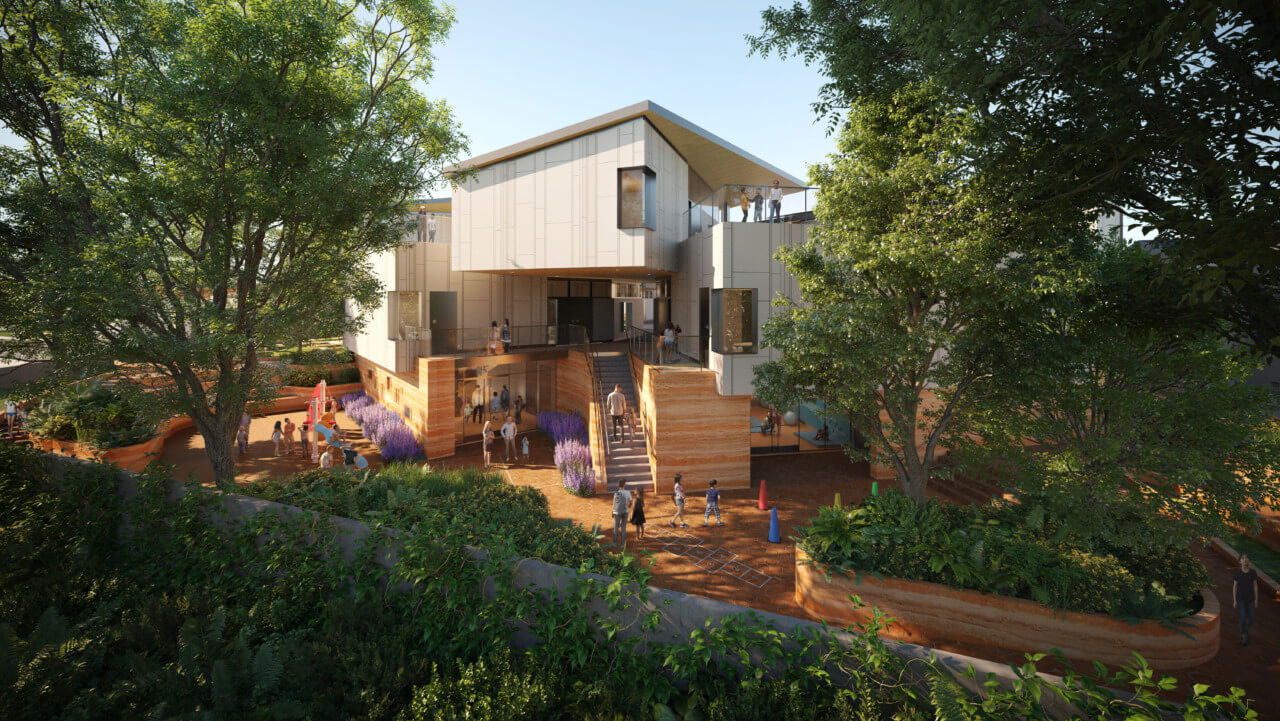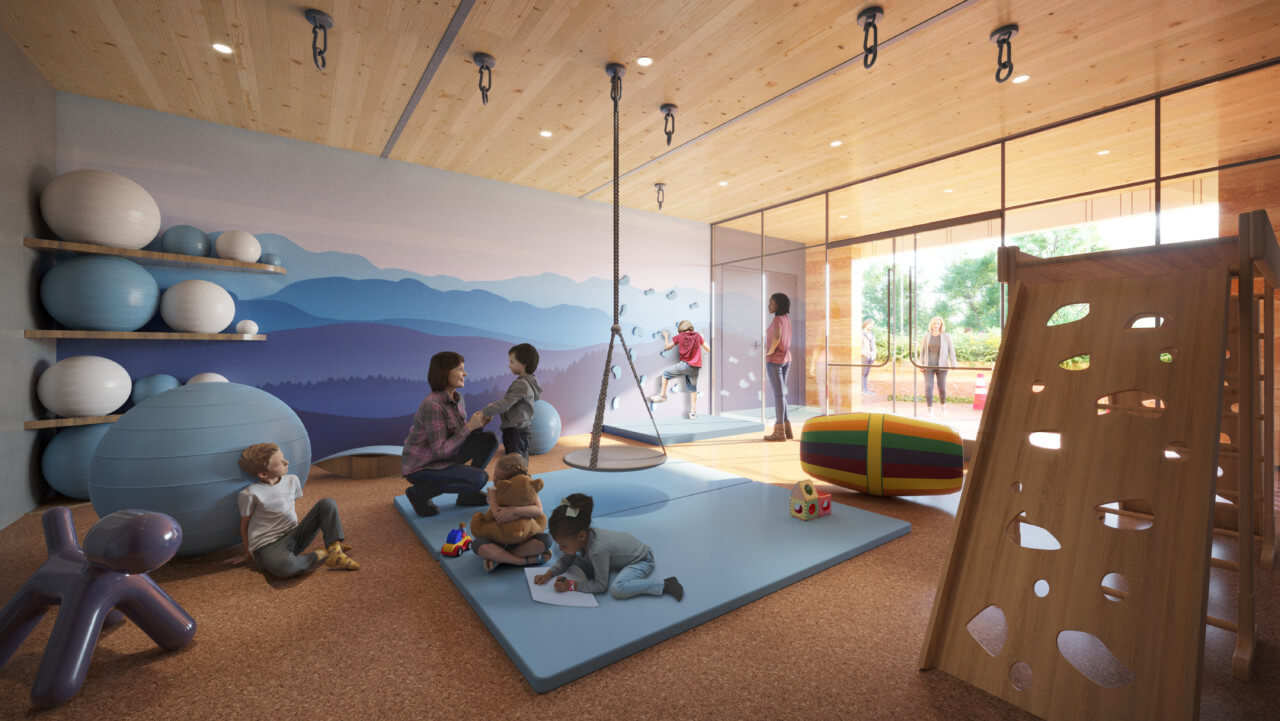Global architecture and design firm NBBJ has shared its design for the Lower School campus of Westmark School, a private school in the San Fernando Valley–bound Los Angeles neighborhood of Encino serving neurodiverse students with language-based learning differences such as dyslexia, dysgraphia, and dyscalculia.
Westmark’s Lower School, which serves kids in grades two through five, is currently housed in an outdated cluster of modular classroom units dating back to the 1950s. The extensive NBBJ-led reimagining will transform the existing Lower School into an inclusive and wholly new net-zero energy facility where indoor and outdoor spaces merge to create a nature-integrated campus—a greenery-swathed learning environment that both stimulates the senses and provides a soothing, concentration-enhancing backdrop for Westmark’s youngest students to study and learn in both individual and collaborative settings.
In 2019–2020, 2.3 million students in the United States were diagnosed with learning differences like dyslexia. While teaching methods have evolved and adapted to better meet the needs of neurodiverse children, most physical classroom settings, however, remain specifically geared for neurotypical students to the detriment of those who learn differently.
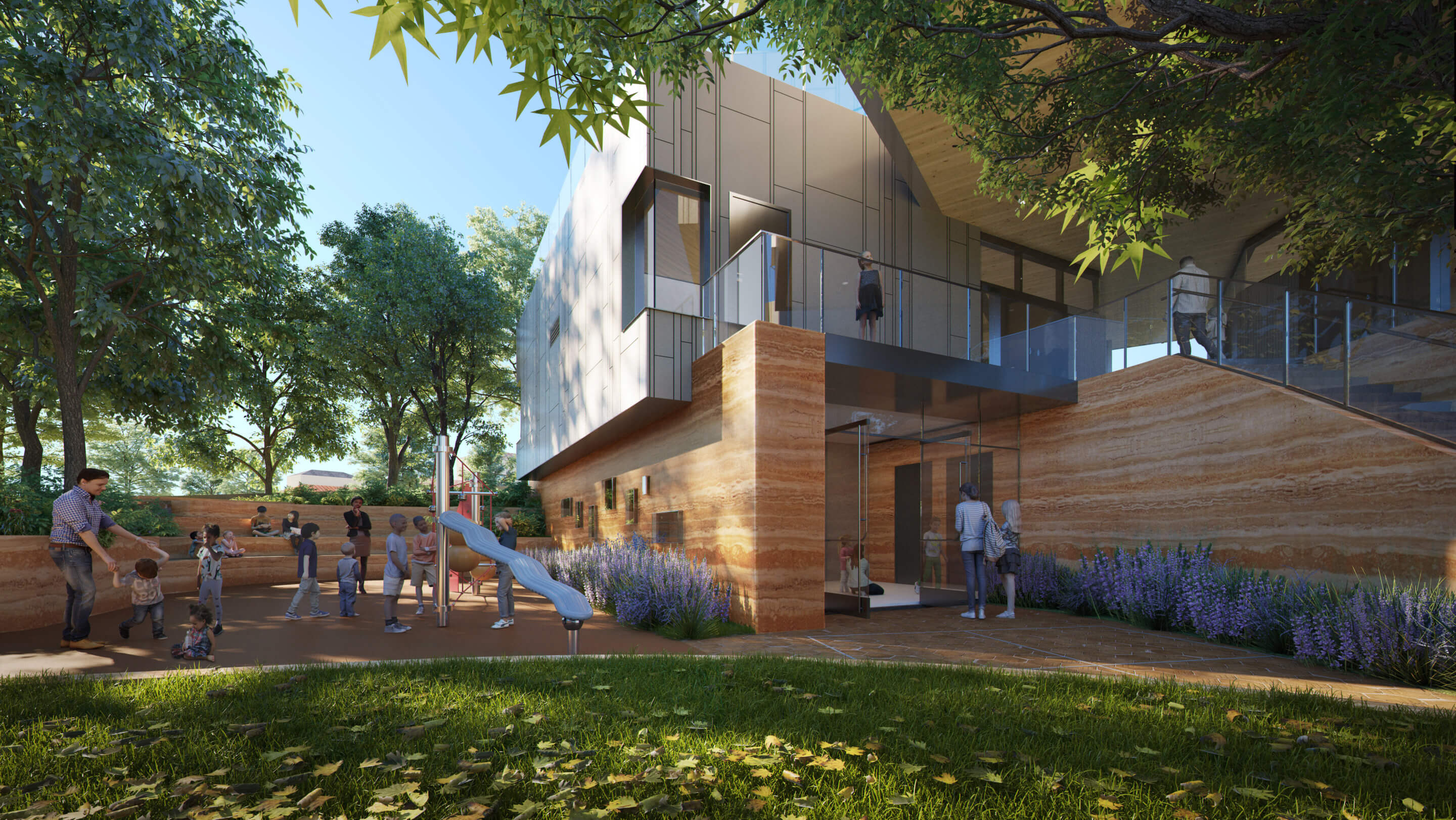
“Embodying Westmark School’s highly specialized education and individualized instruction model, the Lower School provides a range of adaptable, choice-driven zones to accommodate different types of learning, from independent and focused to more communal and active,” elaborated NBBJ in a design statement. “For example, the design prioritizes special acoustical strategies to promote quiet study. Designers selected a variety of sound-absorbing materials for different spaces, developed reading nooks and other niches for creative learning both inside and outside the classroom, and oriented views to green space to enhance different educational modes.”
NBBJ is acting as design architect and architect of record for the LEED Gold–targeting project, which is set to kick off construction in June. Two crucial aspects of the 15,500-square-foot campus—acoustical design and landscape design—are being led by Antonio Acoustics and SWA, respectively. The larger project team also includes Suffolk Construction (contractor), KPFF (civil engineer), tk1sc (MEP engineering), Fast + Epp (structural engineer), and Atelier Ten (environmental design consultant). NBBJ is also overseeing the new facility’s lighting design and environmental graphics.
“We’re really excited about this project and the incredible impact it will have on students, teachers and staff,” NBBJ design partner Jonathan Ward told AN. “The design unites the latest in sustainability and neuroscience research to create an experience that is truly supportive of neurodiversity. The indoor-outdoor environment literally puts nature at the heart, while highly flexible classrooms support a range of diverse learning modes—from group work to individualized learning and everything in between. We are so lucky to work with Westmark School, while tailoring the design to support both their teaching model and positive learning outcomes.”
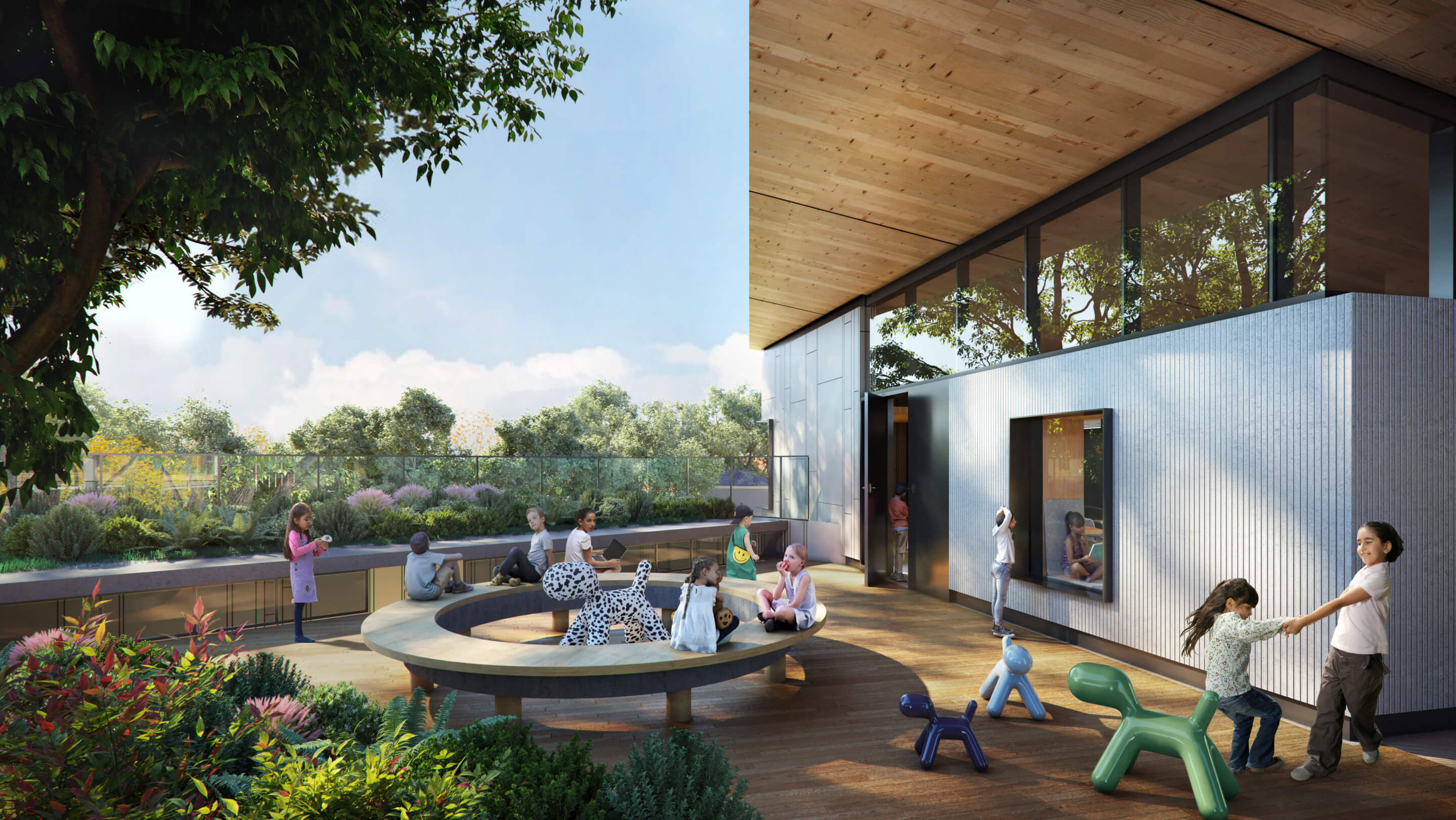
Conceived in partnership with neuroscientist Dr. John Media and the larger Westmark community, the design of the campus takes on a pinwheel formation in which the individual classroom spaces—all featuring ample natural daylighting and oversized hangar doors opening up to the surrounding landscape—will flank a central courtyard anchored by a giant California Sycamore tree. What’s more, all circulation paths within the campus are located outdoors to “not only to stimulate the senses and provide delight, but to create regular moments of engagement with the powerful benefits of outdoor learning beyond the traditional classroom space,” according to the firm.
The building materials used in the project, including mass timber and stone, will provide an additional connection to the natural environment as part the design team’s overarching effort to promoting cognitive, emotional, and physical wellness through exposure to nature. In addition to the central courtyard, the design incorporates several other outdoor gathering spaces including a sensory garden and sculpture play area.
Joining the dedicated classrooms spaces, the Lower School campus will benefit directly from an integrated network of programs currently split between Westmark’s different divisions. These services include occupational and speech therapy, theater space, and school counselor space.
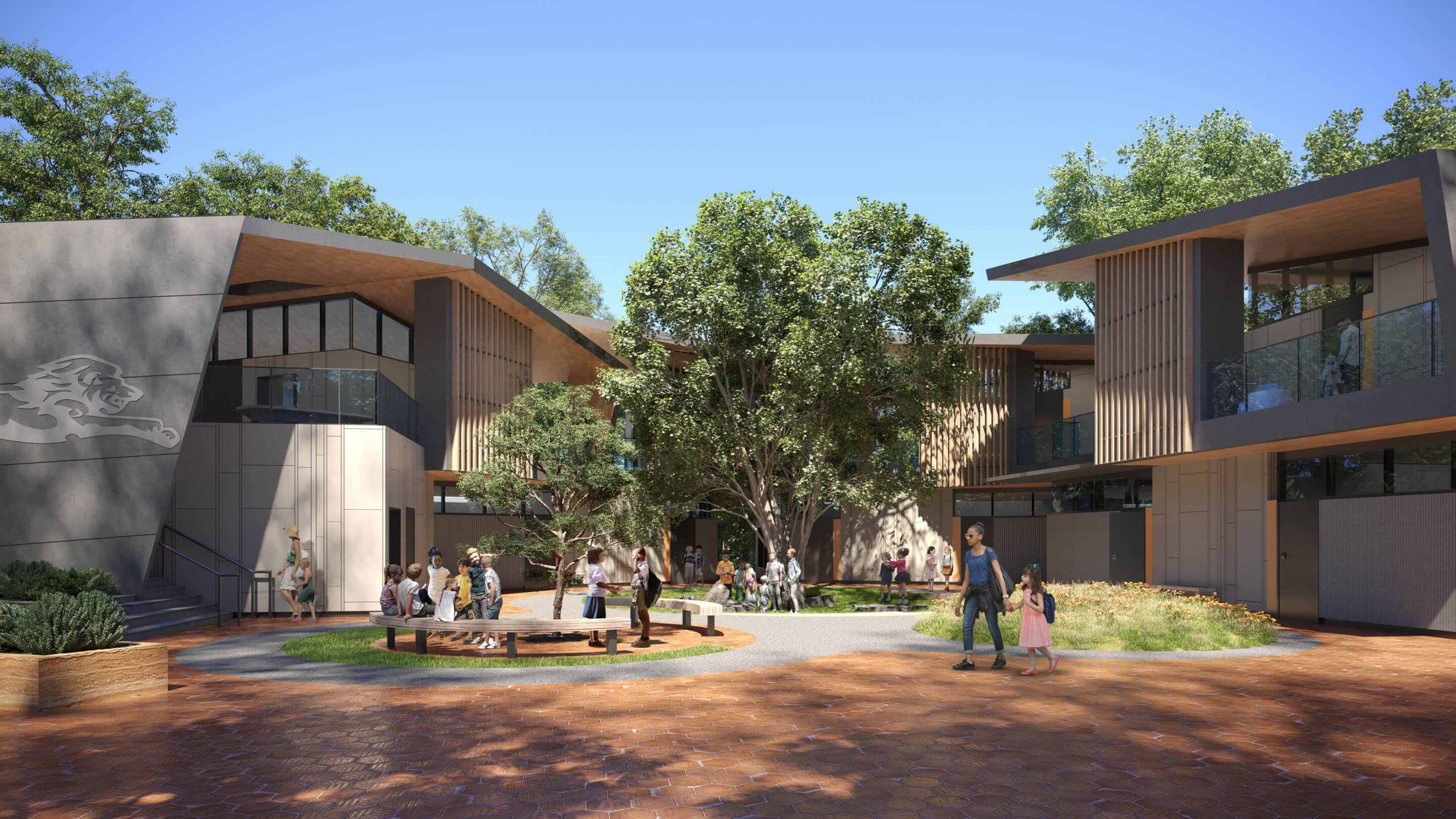
As mentioned, the project is targeting LEED Gold certification as well as International Living Future Institute Zero Carbon certification. The emphasis on sustainability will not only help to minimize the facility’s environmental footprint but also educate the school’s “future leaders to be stewards of the world.” Planned sustainable features including solar arrays, insulating rooftop gardens that double as outdoor learning spaces, a rainwater catchment basin at the campus-anchoring sycamore tree, and the aforementioned use of natural building materials throughout, which will be left exposed so that architecture-curious students can better understand how a building comes together.
And given its focus on flexible, indoor-outdoor learning and a design that lends itself to natural lighting and ventilation, the Lower School is also “well-suited to pandemic needs.”
As noted by NBBJ, the future Lower School Campus acts as a significant benchmark in Westmark’s broader ambitions to be part of a “vital, networked resource of early intervention” that will have a positive impact on neurodiverse children far beyond the school’s Encino campus. Future strategic plans include establishing an “institute of research and training” that will dispense insights and knowledge to educators at public and private schools elsewhere in Los Angeles and nationwide.







